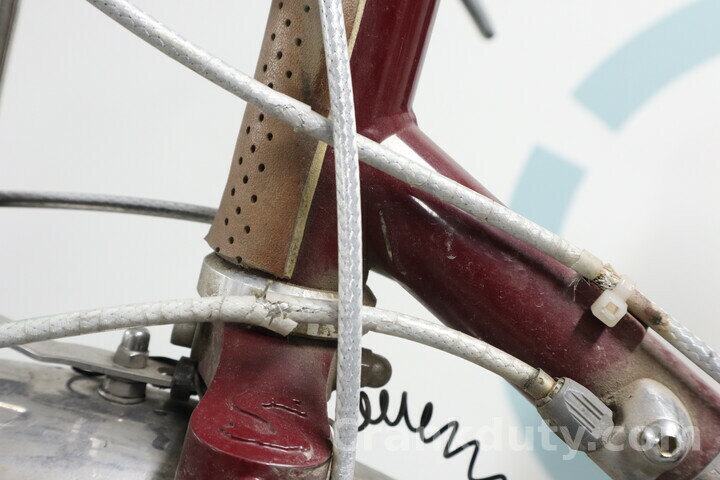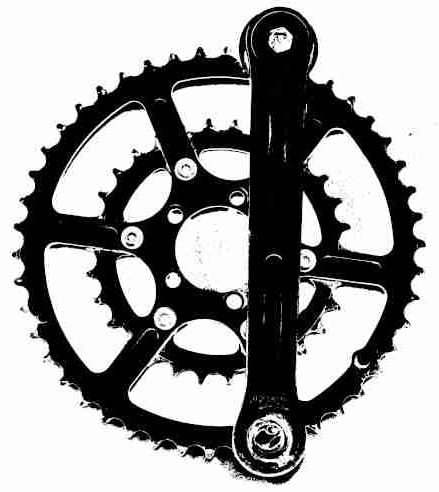Should You Lubricate Bike Cables?
Bike cables need to run smoothly in their housings for shifting and braking to work properly. Should the cables be lubricated to help in this? And what kind of lubricant should be used?
In this article, I will explain when bike cables should be lubricated and when lubrication is not needed. I will also tell which kind of lubricants work the best in this application.
| BIKE CABLE LUBRICATION Condition | Lubricant | Notes |
|---|---|---|
| New housings | none needed | lining works |
| Old housings | thin oil, silicone | lower friction, steel–steel contact |
| Freezing weather | thin oil, silicone | less water ingress |
New housings – No lubrication needed
New cable housings have a low-friction plastic lining whose frictional properties are only marginally improved by lubrication. As long as the lining is intact, no lubrication is needed.
The lining is typically PTFE (Teflon) or other slick plastic. The friction coefficient of shifter cable against this lining is very low, probably under 0.10. This is at least as good as a well-oiled steel–steel contact.
Adding lubricant to a new cable housing is unnecessary: the shifting should work just fine without lubrication. In fact, the lubricant will probably not lower the friction much further.
Some amount of appropriate lubricant still does not hurt. A very thin oil or thin silicone may help to repel moisture and protect from corrosion should the lining fail at some point.
NB. Even new housings should be lubricated if you are riding in freezing temperatures – see below.

Old housings – Lubricate
Old cable housings typically have exposed steel on the inside and should be lubricated to reduce cable friction, wear and corrosion.
The housing steel wires or spiral become exposed as the housing PTFE lining wears through. Some old housings may have never had a proper lining.
Exposed steel inside the housing means steel–steel sliding contact: the steel cable is sliding against steel wires. This contact has high friction if no lubricant is present – the coefficient of friction (COF) may be up to 0.8.
High cable friction means unreliable brake and shifter operation and fast wear. Symptoms include poor brake modulation, brakes rubbing and lever not returning. Shifters are even worse affected: first you lose shifting in the normal direction, then in the opposite direction too.
The steel–steel contact should be lubricated to reduce cable friction. Lubrication will bring the coefficient of friction down to below 0.2 – this is a 3…5x improvement over the dry condition.
Lubricated housings allow a worn cable&housing combination still to shift and brake reliably. Lubrication also mitigates housing wire corrosion, water ingress and freezing issues.
Thin oil or silicone is usually the best lubricant for old housings and cables. These provide lubrication and have decent moisture resistance. Dry lubricants work OK but wash off. Wax works for the cable but is hard to get to penetrate all the details of a broken cable housing.
Freezing weather – Lubricate
All cables and housings – old or new – should be lubricated if you are riding below 32°F or 0°C to reduce water ingress and freezing problems.
Freezing conditions bring new cable issues: water inside the cable housings becomes ice and blocks cable movement.
Most trouble comes in temperature cycles from above to below the freezing point. If your bike first gets wet from rain or slush and later goes below freezing, the wet cable housings will freeze.
Overnight warm storage may have the same effect: meltwater from snow on the bike seeps into the cable housings and freezes next morning when the bike is taken out. The bike may appear to have dried completely overnight, but the cable housings are likely to still be wet.
Lubricants in the cable housings reduce water ingress and freezing problems. Oils and silicones achieve this both by being water-repellent and blocking space inside the housing that could otherwise be flooded.
Which lubricant for cables?
Thin oil: +++
Thin mineral or synthetic oil is one of the best lubricants for bike cables. Oil both lubricates the contact points and penetrates into all crooks of a worn housing, protecting it from moisture and corrosion.
Be sure to choose an oil that is thin enough. The oil should remain very runny also at the lowest temperature you are planning to use it. Winter engine oils (0W-20), fine mechanics oils and some purpose-made cable oils products are good choices.
Silicone: +++
Thin silicone oil is an excellent lubricant for cable housings. It is more water-resistant than standard oils and lubricates equally well. The only downside is that silicone oils and greases are difficult to clean.
Grease: –
Greases are not recommended for cable lubrication. The problem is the high initial viscosity: grease tacks on the the cable and resists its movement on all sides. While grease shear-thins and lubricates well in the actual contact points (inside bends), it is too viscous elsewhere.
Dry lubes: +
Dry lubes lubricate bike cables quite well but do not offer much protection against water. They wash off quite easily, do not prevent water from entering the housings and do not penetrate well enough to protect the housings from corrosion.
Wax: +
Most bike-oriented wax products are decent lubricants for the cable, but not for the housing.
Waxes can be rubbed on the cable and will reduce friction in the contact points. But they are very difficult to get to seep into the housing details. This means that wax will not protect the cable housing wires from corrosion. It offers only limited protection from water ingress and freezing issues in cold environments.
Wax could in principle protect cable housings with enough effort and an excess of wax in paste form. However, this will lead to similar stickiness issues as greasing the housings: the high initial viscosity of the paste will resist cable movement from all sides.

